Poulan Pro PR111 Le manuel du propriétaire
- Catégorie
- Souffleuses à neige
- Taper
- Le manuel du propriétaire

IMPORTANT MANUAL DO NOT THROW AWAY
OWNER'S MANUAL
MODEL NUMBER:
PR111
SNOW THROWER
Always Wear Eye Protection During Operation
WARNING:
Read the Owner's Manual and
fol low all Warnings and Safety
In struc tions. Fail ure to do so
can result in serious injury.
Gasoline containing up to 10% ethanol (E10) is acceptable for use in this machine.
The use of any gasoline exceeding 10% ethanol (E10) will void the product warranty.
588 58 77-31 07.29.15 TH Printed in the U.S.A.

2
Safe Operation Practices for Walk-Behind Snow Throwers
IMPORTANT: This snow thrower is capable of amputating hands and feet and throwing objects. Failure to observe the
following safety instructions could result in serious injury.
(c) Fill fuel tank outdoors with extreme care. Never fi ll
fuel tank indoors.
(d) Never fi ll containers inside a vehicle or on a truck or
trailer bed with a plastic liner. Always place containers
on the ground, away from your vehicle, before fi lling.
(e) When practical, remove gas-powered equipment
from the truck or trailer and refuel it on the ground.
If this is not possible, then refuel such equipment
on a trailer with a portable container, rather than
from a gasoline dispenser nozzle.
(f) Keep the nozzle in contact with the rim of the fuel
tank or container opening at all times, until refueling
is complete. Do not use a nozzle lock-open device.
(g) Replace gasoline cap securely and wipe up spilled
fuel.
(h) If fuel is spilled on clothing, change clothing
immediately.
5. Use extension cords and receptacles as specifi ed by
the manufacturer for all units with electric drive motors
or electric starting motors.
6. Never attempt to make any adjustments while the
engine (motor) is running (except when specifi cally
recommended by manufacturer).
7. Always wear safety glasses or eye shields during op-
eration or while performing an adjustment or repair to
protect eyes from foreign objects that may be thrown
from the machine.
8. Use ear protectors to avoid damage to hearing.
Training
1. Read, understand and follow all instructions on the
machine and in the manual(s) before operating this
unit. Be thoroughly familiar with the controls and the
proper use of the equipment. Know how to stop the
unit and disengage the controls quickly.
2. Never allow children to operate the equipment. Never
allow adults to operate the equipment without proper
instruction.
3. Keep the area of operation clear of all persons, par-
ticularly small children.
4. Exercise caution to avoid slipping or falling, especially
when operating the snow thrower in reverse.
Preparation
1. Thoroughly inspect the area where the equipment is
to be used and remove all doormats, sleds, boards,
wires, and other foreign objects.
2. Ensure the control bar is released before starting the
engine.
3. Do not operate the equipment without wearing adequate
winter garments. Avoid loose fi tting clothing that can
get caught in moving parts. Wear footwear that will
improve footing on slippery surfaces.
4. Handle fuel with care; it is highly fl ammable
(a) Use an approved fuel container.
(b) Never add fuel to a running engine or hot engine.
CONGRATULATIONS on your purchase of a new snow thrower. It has been designed, engineered and man u fac tured to
give best possible dependability and per for mance.
Should you experience any problem you cannot easily remedy, please contact your nearest authorized service center. We
have competent, well-trained tech ni cians and the proper tools to service or repair this unit.
Please read and retain this manual. The instructions will enable you to assemble and maintain your snow thrower prop er ly.
Always observe the “SAFETY RULES”.
Look for this symbol to point out im por tant
safety precautions. It means CAUTION!!! BE-
COME ALERT!!! YOUR SAFE TY IS IN VOLVED.
WARNING: Always disconnect spark plug wire
and place it where it can not con tact plug in order
to pre vent ac ci den tal start ing when setting up,
trans port ing, ad just ing or making re pairs.
WARNING: This snow thrower is for use on
sidewalks, driveways and other ground level sur-
faces. Caution should be exercised while using
on sloping surfaces. Do not use snow thrower
on surfaces above ground level such as roofs
of residences, garages, porch es or other such
structures or buildings.
WARNING: Engine exhaust, some of its con stit u-
ents, and certain vehicle com po nents contain or
emit chem i cals known to the State of Cal i for nia
to cause can cer and birth defects or oth er re pro-
duc tive harm.
CAUTION: Muffl er and other engine parts become
extremely hot during operation and remain hot
after engine has stopped. To avoid severe burns
on contact, stay away from these areas.
WARNING: Snow throwers have ex posed rotating
parts, which can cause severe injury from contact,
or from material thrown from the discharge chute.
Keep the area of operation clear of all persons,
small children and pets at all times including
startup.

3
CUSTOMER RESPONSIBILITIES
• Read and observe the safety rules.
• Follow a regular schedule in maintaining, caring for
and using your snow thrower.
• Follow the instructions under “Maintenance” and “Stor-
age” sec tions of this manual.
PRODUCT SPECIFICATIONS
Gasoline Capacity 0.4 Gallon (1,4 Liters)
and Type: Unleaded Regular only
Oil Type SAE 30 (above 50°F)
(API SG–SL): SAE 5W-30 or 10W-30
(32° to 50°F)
SAE 5W-30 (below 32°F)
Oil Capacity: 17 Ounces (0,5 Liters)
Spark Plug: F6RTC
Gap: 0.030" (0,762 mm)
SERIAL NUMBER: ___________________________
DATE OF PURCHASE: _______________________
THE MODEL AND SERIAL NUMBERS WILL BE FOUND
ON A DECAL ATTACHED TO THE REAR OF THE SNOW
THROWER HOUSING (Figure 1).
YOU SHOULD RECORD BOTH SERIAL NUMBER AND
DATE OF PURCHASE AND KEEP IN A SAFE PLACE
FOR FUTURE REFERENCE.
Operation
1. Do not put hands or feet near or under rotating parts.
Keep clear of the discharge opening at all times.
2. Exercise extreme caution when operating on or cross-
ing gravel drives, walks, or roads. Stay alert for hidden
hazards or traffi c.
3. After striking a foreign object, stop the engine (motor),
disconnect the cord on electric motors, thoroughly
inspect the snow thrower for any damage, and repair
the damage before restarting and operating the snow
thrower. Remove key.
4. If the unit should start to vibrate abnormally, stop the
engine (motor) and check immediately for the cause.
Vibration is generally a warning of trouble.
5. Stop the engine (motor) whenever you leave the
operating position, before unclogging the auger hous-
ing or discharge chute, and when making any repairs,
adjustments or inspections.
6. When cleaning, repairing or inspecting the snow thrower,
stop the engine and make certain the auger blades and
all moving parts have stopped. Remove key.
7. Do not run the engine indoors, except when starting
the engine and for transporting the snow thrower in or
out of the building. Open the outside doors; exhaust
fumes are dangerous.
8. Exercise extreme caution when operating on slopes.
9. Never operate the snow thrower without proper guards,
and other safety protective devices in place and working.
10. Never direct the discharge toward people or areas
where property damage can occur. Keep children and
others away.
11. Do not overload the machine capacity by attempting
to clear snow at too fast a rate.
12. Never operate the machine at high transport speeds
on slippery surfaces. Look behind and use care when
operating in reverse.
13. Disengage power to the auger blades when snow
thrower is transported or not in use.
14. Use only attachments and accessories approved by
the manufacturer of the snow thrower.
15. Never operate the snow thrower without good visibility
or light. Always be sure of your footing, and keep a fi rm
hold on the handles. Walk; never run.
16. Never touch a hot engine or muffl er.
Clearing a Clogged Discharge Chute
Hand contact with the rotating auger blades
inside the discharge chute is the most common
cause of injury associated with snow throwers.
Never use your hand to clean out the discharge
chute.
To clear the chute:
1. SHUT THE ENGINE OFF!
2. Wait 10 seconds to be sure the auger blades have
stopped rotating.
3. Always use a clearing tool at least 15 inches long.
Maintenance and Storage
1. Check shear bolts and other bolts at frequent intervals
for proper tightness to be sure the equipment is in safe
working condition.
2. Never store the machine with fuel in the fuel tank inside
a building where ignition sources are present such as
hot water heaters, space heaters, or clothes dryers.
Allow the engine to cool before storing in any enclosure.
3. Always refer to operator’s manual for important details
if the snow thrower is to be stored for an extended
period.
4. Maintain or replace safety and instruction labels, as
necessary.
5. Run the machine a few minutes after throwing snow
to prevent freeze-up of the collector/impeller.
Figure 1
FOR SERVICE CALL/POUR LE SERVICE APPELER
1-800-448-7543
ASSEMBLED IN U.S.A. / ASSEMBLÉ AUX ÉTATS-UNIS
MCRAE, GA 31055
000000
SERIAL NUMBER
NUMERO DE SERIE
MODEL NUMBER / NUMERO DE MODELE
PRODUCT
PRODUIT
MAINTENANCE LEVEL
NIVEAU DE MAINTENANCE
000000000 00
000000A 000000
00000000
CONFORMS TO ANSI B71.3-2005 SAFETY STANDARDS
CONFORME AUX NORMES DE SÉCURITÉ DE ANSI B71.3-2005

4
OPERATION ...................................................................... 7-11
MAINTENANCE ............................................................... 12-15
STORAGE ............................................................................. 16
TROUBLESHOOTING .......................................................... 17
REPAIR PARTS ............................................................... 18-27
SAFETY RULES .................................................................. 2-3
PRODUCT SPECIFICATIONS ................................................ 3
CUSTOMER RESPONSIBILITIES .......................................... 3
SAFETY AND INSTRUCTIONAL DECALS ........................... 4
SETUP.................................................................................. 5-6
PRODUCT OVERVIEW .......................................................... 6
TABLE OF CONTENTS
KNOW YOUR SNOW THROWER
READ THIS OWNER'S MANUAL AND ALL SAFETY RULES BEFORE OPERATING YOUR SNOW THROWER.
Compare the illustrations with your snow thrower to familiarize yourself with the location of various controls and adjustments.
Save this manual for future reference.
These symbols may appear on your snow thrower or in literature supplied with the product. Learn and understand
their meaning.
IMPORTANT: Safety and instruction decals are located near areas of potential danger. Replace damaged decals.
READ AND FOLLOW ALL SAFETY INFORMATION
AND INSTRUCTIONS BEFORE USE OF THIS PRODUCT.
KEEP THESE INSTRUCTIONS FOR FUTURE REFERENCE.
DANGER
OR WARNING
CHOKE
PRIMER
2
IGNITION KEY.
INSERT TO START
AND RUN,
PULL OUT TO STOP.
EAR PROTECTION
RECOMMENDED

5
Setup
Loose Parts
Use the chart below to verify that all parts have been shipped.
Procedure Description Qty. Use
1.
No parts required – Unfold the handle.
2.
Carriage bolts
Shoulder Bolt
Flange nuts
Washer
Knob
Cap Plunger
Chute
Defl ector
4
1
4
1
1
1
1
1
Install the discharge chute.
Install the discharge chute.
Install the discharge chute.
Install the discharge chute.
Install the discharge chute.
Install the discharge chute.
Install the discharge chute.
Install the discharge chute.
1. Unfolding the Handle
Procedure
1. Loosen the two handle knobs and pull out the two
handle bolts until you can move the handle freely and
rotate the handle to the operating position (Figure 2).
2. Tighten the handle knobs until they are snug (Figure 3).
Figure 3
1. Handle knobs 2. Handle bolt
Figure 2
2
1
2. Installing the Discharge Chute
Procedure
1. Install the chute defl ector to the discharge chute using
bolts and, washer, nut, defl ector knob and cap plunger
(Figure 4).
2. Install the discharge chute to the chute base using
three screws and nuts.
IMPORTANT: Do not overtighten the fl ange nuts; other-
wise you may damage the discharge chute.
Figure 4
1. Defl ector
2. Carriage bolts
3. Flange nuts 5/16-18
4. Washer
5. Knob
6. Discharge chute
7. Carriage Bolt
8. Shoulder Bolt
9. Flange nuts 1/4-20
10. Cap Plunger
2
2
7
6
3
3
8
4
9
5
10
1

6
1
Fill if oil is
below letter
“L” on the
¿OOHUFDS
Fill if oil
is below
“Add”
on the
GLSVWLFN
3. Filling the Engine with Oil
ENGINE
See engine manual.
LUBRICATION
NOTE: SAE 10W30 or SAE 5W30 oil is acceptable for
use in cold temperatures if engine is diffi cult to start.
NOTE: Although multi-viscosity oils (5W30, 10W30 etc.)
improve starting in cold weather, these multi-viscosity oils
will result in increased oil consumption when used above
32°F. Check your engine oil level more frequently to avoid
possible engine damage from running low on oil.
Change the oil after every 25 hours of operation or at least
once a year if the snow thrower is not used for 25 hours
in one year.
Check the crankcase oil level before starting the engine
and after each fi ve (5) hours of continuous use. Tighten oil
fi ll cap / dipstick securely each time you check the oil level.
1. Move the snowthrower to a level surface.
2. Clean around the dipstick (Figure 5).
NOTE: Dipstick location may vary depending on engine
type.
3. Remove either side mounted fi ller cap dipstick or high
oil fi ll dipstick and wipe it clean.
4. Insert the dipstick into the fi ller neck and turn clockwise
until fully seated. Then remove the dipstick by turning
it counter-clockwise.
5. Fill oil to "FULL" on dipstick with the recommended oil.
6. Securely screw in the oil fi ller cap/dipstick.
1. Oil fi ller cap/dipstick
Figure 5
Product Overview
5
9
2
6
10
1
7
*11
*11
3
8
12
4
13
Figure 6
1. Discharge chute
2. Chute defl ector handle
3. Fuel tank cap
4. Control bar
5. Recoil start handle
6. Primer
7. Choke lever
8. Electric-start button
(if equipped)
9. Oil drain plug
10. Drive belt cover
*11. Oil fi ll cap/dipstick
12. Ignition key
13. Chute defl ector
* Dipstick location may vary depending on engine type.

7
1
Fill if oil is
below letter
“L” on the
¿OOHUFDS
Fill if oil
is below
“Add”
on the
GLSVWLFN
Filling the Fuel Tank
Fill the fuel tank with fresh, unleaded gasoline (minimum
87 AKI octane rating) (Figure 7).
IMPORTANT: Do not add oil to the gasoline.
IMPORTANT: Do not use E85 blended fuels. This engine
is not E20/E30/E85 compatible. Alternative fuels with
high alcohol content can cause hard starting, poor engine
performance, and may cause internal engine damage.
NOTE: For best results, purchase only the quantity of
gasoline that you expect to use in 30 days. Otherwise,
you may add fuel stabilizer to newly purchased gasoline
to keep it fresh for up to 6 months.
Figure 7
Operation
NOTE: Determine the left and right sides of the machine
from the normal operating position.
• Gasoline is extremely fl ammable and explosive. A
fi re or explosion from gasoline can burn you and
others.
• To prevent a static charge from igniting the gaso-
line, place the container and/or snowthrower on the
ground before fi lling, not in a vehicle or on an object.
• Fill the tank outdoors when the engine is cold.
Wipe up spills.
• Do not handle gasoline when smoking or around
an open fl ame or sparks.
• Store gasoline in an approved fuel container, out
of the reach of children.
• Do not tip the snowthrower with fuel in the fuel tank.
The operation of any snow thrower can result in
foreign objects thrown into the eyes, which
can result in severe eye damage. Always wear
safety glasses or eye shields while operating
your snow thrower or performing any ad just-
ments or repairs. We recommend standard safe ty glasses
or a wide vision safety mask worn over spectacles.
IMPORTANT: Know how to operate all controls before
adding fuel or attempting to start the engine.
Checking the Engine Oil Level
1. Move the snowthrower to a level surface.
2. Clean around the dipstick (Figure 8).
NOTE: Dipstick location may vary depending on engine
type.
3. Remove either side mounted fi ller cap dipstick or high
oil fi ll dipstick and wipe it clean.
4. Insert the dipstick into the fi ller neck and turn clockwise
until fully seated. Then remove the dipstick by turning
it counter-clockwise.
5. Fill oil to "FULL" on dipstick with the recommended oil.
6. Securely screw in the oil fi ller cap/dipstick.
NOTE: Running the engine with a low oil level can cause
engine damage. Always check the engine oil before start up.
NOTE: Running the engine with too much oil may cause
engine damage and excess smoke in the exhaust. Always
check the engine oil level before start up.
1. Oil fi ller cap/dipstick
Figure 8

8
Starting the Engine
1. Push key in (Figure 9).
2. Move choke lever to left position (Figure 10).
3. Firmly push in the primer 2 times with your thumb,
holding the primer in a for a second before releasing
it each time (Figure 11).
NOTE: Remove your glove when you push in the primer
so that air cannot escape from the primer hole.
IMPORTANT: It may not be necessary to use the primer
or the choke if the engine has been running and is hot.
Excessive priming may fl ood the engine and prevent it
from starting.
4. Pull the recoil starter (Figure 12) or if your snow thrower
is equipped with an electric starter, connect an exten-
sion cord to the snow thrower and plug the other end
into a three-hole grounded 110 volt A.C. receptacle
and push the electric-start button (Figure 13).
1. Primer
Figure 11
1
Figure 9
1. Key
1
1. Choke lever
Figure 10
1
1. Recoil start handle
Figure 12
1

9
Figure 13
1. Electric start button
1
NOTE: Use only a UL-listed, 16-gauge extension cord
recommended for outdoor use that is not longer than 50
feet (15 m).
The electrical cord can become damaged, causing
a shock or fi re.
Thoroughly inspect the electrical cord before plug-
ging it into a power source. If the cord is damaged,
do not use it to start the snowthrower. Replace or
repair the damaged cord immediately. Contact an
Authorized Service Dealer for assistance.
IMPORTANT: Run the electric starter no more than 10
times at intervals of 5 seconds on, then 5 seconds off.
Running the electric starter extensively can overheat and
damage it. If the engine does not start after this series of
attempts, wait at least 40 minutes to allow the starter to
cool before attempting to start it again. If the engine does
not start after the second series of attempts, take the
snowthrower to an Authorized Service Dealer for service.
NOTE: If you pull the recoil handle and feel no resistance,
the starter may be frozen. Thaw out the starter before
attempting to start the snowthrower.
5. While the engine is running, move the choke lever
slowly to the right position.
6. Unplug the extension cord from the power source and
the snowthrower (Figure 13).
Unplug the power cord whenever you are not start-
ing the snowthrower.
Engaging the Auger Blades
1. To engage the auger blades, hold the control bar against
the handle (Figure 14).
Figure 14
1. Control bar
1
Disengaging the Auger Blades
1. To disengage the auger blades, release the control bar
(Figure 15).
Figure 15
1. Control bar
1

10
1
2
Figure 16
1. Rub Area 2. Wear Areas
IMPORTANT: During initial operation there is wear be-
tween the auger blades and the scraper bar. This wear is
normal and to be expected. Maximum performance, both
snow throwing and driving, occurs when there is zero
clearance between these two parts. In order to account
for part variation a small interference is designed into the
parts so they can wear to zero clearance within the fi rst
few minutes of operation (Figure 16).
During initial break-in period of the auger blades it
is normal for the auger blades to build up excessive
heat if not operated in the snow.
Do not operate without snow or water for lubricating
the auger blades. This will cause excessive heat
build up in the auger blades which could cause
damage to the auger blades and scrapper bar.
1
Stopping the Engine
To stop the engine, pull key out (Figure 17).
Figure 17
1. Key
Adjusting the Discharge Chute
and Chute Defl ector
1. To adjust the discharge chute, move defl ector chute
handle left or right to desired position (Figure 18).
2. To raise or lower the angle of the chute defl ector, loosen
the chute defl ector knob on the chute defl ector and
move the chute defl ector up or down (Figure 18).
1. Chute defl ector knob
2. Chute defl ector
3. Chute handle
Figure 18
1
2
3

11
Preventing Freeze-up After Use
• Let the engine run for a few minutes to prevent moving
parts from freezing. Stop the engine, wait for all mov-
ing parts to stop, and remove ice and snow from the
snowthrower.
• Clean off any snow and ice from the base of the chute.
• Rotate the discharge chute left and right to free it from
any ice buildup.
• With the ignition key in the Off position, pull the recoil
starter handle several times or connect the electrical
cord to a power source and the snowthrower and push
the electric start button once to prevent the recoil starter
and/or the electric starter from freezing up.
• In snowy and cold conditions, some controls and mov-
ing parts may freeze. Do not use excessive force when
trying to operate frozen controls. If you have diffi culty
operating any control or part, start the engine and let
it run for a few minutes.
Operating Tips
The auger blades can throw stones, toys, and
other foreign objects and cause serious personal
injury to the operator or to bystanders.
• Keep the area to be cleared free of all objects
that the auger blades could pick up and throw.
• Keep all children and pets away from the area
of operation.
• Do not operate snow thrower if weather condi-
tions im pair visibility. Throwing snow dur ing
a heavy, windy snowstorm can blind you and
be hazardous to the safe operation of the snow
thrower.
• The best time to remove snow is the early morning.
At this time the snow is usually dry and has not been
exposed to the direct sun and warming tem per a tures.
• Slightly overlap each successive path to ensure all
snow will be removed.
• Throw snow downwind whenever possible.
• For extremely heavy snow, re duce the width of snow
removal by over lap ping previous path and moving
slowly.
• Keep engine clean and clear of snow during use. This
will help air fl ow and extend engine life.
• After snow-throwing is completed, allow engine to run
for a few minutes to melt snow and ice off the engine.
• Clean the entire snow thrower thoroughly after each
use and wipe dry so it is ready for next use.
• Spraying off unit with a hose is NOT recommended.
Clearing a Clogged Discharge
Chute
Hand contact with the rotating auger blades inside
the discharge chute is the most common cause
of injury associated with snow throwers. Never
use your hand to clean out the discharge chute.
To clear the chute:
1. SHUT THE ENGINE OFF!
2. Wait 10 seconds to be sure the auger blades have
stopped rotating.
3. Always use a clearing tool at least 15 inches long, not
your hands (Figure 19).
Figure 19

12
Maintenance
NOTE: Determine the left and right sides of the machine from the normal operating position.
Check for Loose Fasteners
Clean / Inspect Snow Thrower
Clean / Replace V-Belts
Check / Replace Auger Blades and Scraper Bar
Check Fuel Lines and Electrical Wires
Check Engine Oil Level
Change Engine Oil
Inspect Muffler
Check / Replace Spark Plug
Empty Fuel Tank
Adjusting the Control Cable
Checking the Control Cable
1. Release the control bar to remove the slack in the
control cable (Figure 20).
IMPORTANT: The control cable must contain some slack
when you disengage the control bar for the auger blades
to stop properly.
NOTE: You may need to adjust the control cable from
position 1 (default) to position 2 if you notice belt slip
when the control bar is engaged.
NOTE: If the control cable is adjusted to position 2,
ensure that the auger stops properly when the control bar
is released
Adjusting the Control Cable
1. With the control bar disengaged, unhook and move
the control cable to the highest position. (Figure 21).
Figure 20
1. Control bar
1
1. Control bar
2. Adjuster link
3. Cable positions
Figure 21
1
2
3
Position 1: Default position
(Lower Hole as shown in illustration)
Position 2

13
1
2
Inspecting the Auger Blades/
Scraper Bar
Before each session, inspect the auger blades for wear.
When an auger blade edge or the scraper bar has worn
down have an Authorized Service Dealer replace the
auger blades and the scraper bar (Figure 22).
NOTE: Auger blades and scraper bar are wear items and
may have to be replaced after extended use.
Figure 22
1. Auger blades 2. Scraper bar
Changing the Engine Oil
Run the engine a few minutes before changing the oil to
warm it. Warm oil fl ows better and carries more contami-
nants.
The engine oil will be hot. Avoid skin contact
with the used engine oil.
Figure 23
1. Oil drain plug
1
1. Move snowthrower to a level surface.
2. Run snowthrower until all fuel has been depleted.
3. Remove ignition key.
4. Place an oil drain pan under the oil drain plug and remove
the oil drain plug. Tip the snowthrower backward and
drain the used oil in the oil drain pan (Figure 23).
5. After draining the used oil, return the snowthrower to
the operating position.
6. Install the oil drain plug and torque to 145-150 in-lbs
(17 N-m).
NOTE: Dipstick location may vary depending on engine
type.
7. Clean around the oil fi ller cap/dipstick (Figure 24).
8. Unscrew and remove the oil fi ll cap/dipstick.
9. With the snowthrower in the operating position, care-
fully pour oil into the oil fi ll hole until "Full" on the fi ll
cap/dipstick line (Figure 25).
Max fi ll: 18 oz. (0.5 l), type: automotive detergent oil
with an API service classifi cation of SJ, SL, or higher.
Figure 24
1. Oil fi ll cap/dipstick
1
1
10. Screw in the oil fi ll cap/dipstick and hand tighten it
securely.
11. Wipe up any spilled oil.
12. Dispose of the used oil properly at a local recycling
center.
Figure 25
Fill if oil is
below letter
“L” on the
¿OOHUFDS
Fill if oil
is below
“Add”
on the
GLSVWLFN

14
7. Install the oil fi ll cap.
8. Disconnect the spark plug wire from the spark plug
(Figure 28).
9. Clean around the spark plug.
10. Remove the spark plug from the cylinder head.
IMPORTANT: Replace a cracked, fouled, or dirty spark
plug. Do not clean the electrodes because grit entering
the cylinder can damage the engine.
11. Set the gap on the plug to 0.030 inch (0.76 mm)
(Figure 29).
12. Install the spark plug and torque to 20–22 ft-lb
(27-30 N-m).
13. Connect the spark plug wire to the spark plug
(Figure 28).
14. Remove the oil fi ll cap.
15. Install the shroud with the screws removed in step 4
(Figure 27).
NOTE: Ensure that the shroud assembly fi ts together in
the side grooves.
16. Install the oil fi ll cap.
17. Install the discharge chute, and the discharge chute
handle onto the snowthrower using the hardware re-
moved in step 3 (Figure 26).
1. Spark plug wire
Figure 28
1
Figure 29
0.030 inch
(0.76 mm)
Servicing the Spark Plug
Use a NGK BPR6ES, Champion RN9YC, or BOSCH
WR6DC spark plug or equivalent.
1. Stop the engine and wait for all moving parts to stop.
2. Rotate the discharge chute so that it faces forward.
3. Remove the discharge chute and the discharge chute
handle by removing the three carriage bolts and three
fl ange nuts (Figure 26).
4. Remove the six screws that secure the shroud assembly
(Figure 27).
5. Remove the oil fi ll cap.
6. Remove the shroud assembly.
1. Screw 3. Oil fi ll cap
2. Shroud assembly
Figure 27
1
2
3
Figure 26
2
2
3
3
1
1. Discharge chute 2. Carriage bolts
3. Flange nuts

15
Replacing the Drive Belt
If drive belt becomes worn, oil-soaked, excessively cracked,
frayed, or otherwise damaged, replace the belt.
1. Remove the drive side cover by removing the six screws
as shown in (Figure 30).
2. Press down on front of idler arm to release the belt
tension (Figure 31).
3. Remove the drive belt from the drive pulley (Figure 31).
4. Install the new drive belt, routing it as shown in
Figure 31.
NOTE: Route the new drive belt fi rst around the engine
pulley, then the idler pulley, and fi nally around the drive
pulley while pressing down on the front of the idler arm.
(Figure 31).
5. Install the drive side cover with the screws removed in
step 1.
NOTE: Ensure that the drive belt is properly adjusted
and operating; refer to Checking the Control Cable and
Adjusting the Control Cable in the Maintenance section
of this manual.
1. Drive side cover
2. Screw
3. Drive pulley
4. Idler arm
Figure 30
5. Idler pulley
6. Engine pulley
7. Drive belt
1. Idler arm
2. Idler pulley
3. Engine pulley
4. Drive pulley
Figure 31
1
2
7
4
6
5
3
2
1
3
2
4

16
Storage
STORING THE SNOWTHROWER
Immediately prepare your snow thrower for storage at
the end of the season or if the unit will not be used for 30
days or more.
SNOW THROWER
When snow thrower is to be stored for a period of time,
clean it thor oughly, re move all dirt, grease, leaves, etc.
Store in a clean, dry area.
1. Clean entire snow thrower after each use.
2. Inspect and replace belts, if necessary (See “Replace-
ing the Drive Belt” sec tion of this manual).
3. Be sure that all nuts, bolts, screws, and pins are securely
fas tened. Inspect moving parts for damage, breakage
and wear. Replace if nec es sary.
FUEL SYS TEM
IMPORTANT: It is important to prevent gum deposits from
forming in essential fuel system parts such as carburetor,
fuel hose, or tank during storage. Also, alcohol blended
fuels can attract moisture which leads to separation and
formation of acids during storage. Acidic gas can damage
the fuel system of an engine while in storage.
• Empty the fuel tank by starting the engine and letting
it run until the fuel lines and car bu re tor are empty.
• Never use engine or carburetor cleaner prod ucts in
the fuel tank or permanent damage may occur.
• Use fresh fuel next season.
NOTE: Fuel stabilizer is an acceptable alternative in min i-
miz ing the formation of fuel gum deposits during stor age.
Add stabilizer to gasoline in fuel tank or storage container.
Always follow the mix ratio found on stabilizer container.
Run engine at least 10 min utes after adding stabilizer to
allow the stabilizer to reach the carburetor. Do not empty
the gas tank and carburetor if using fuel stabilizer.
ENGINE OIL
Drain oil (with engine warm) and replace with clean engine
oil. (See “Changing the Engine Oil” section of this man ual).
CYLINDER
1. Remove spark plug.
2. Pour one ounce (29 ml) of oil through spark plug hole
into cylinder.
3. Pull recoil starter handle slowly a few times to dis trib ute
oil.
OTHER
• Remove safety ignition key; store it in a safe place.
• Do not store gasoline from one season to another.
• Replace your gasoline can if your can starts to rust.
Rust and/or dirt in your gasoline will cause problems.
• If possible, store your snow thrower indoors and cover
it to protect it from dust and dirt.
• Cover your snow thrower with a suitable pro tec tive
cover that does not retain moisture. Do not use plastic.
Plastic cannot breathe, which allows con den sa tion to
form and will cause your snow thrower to rust.
IMPORTANT: Never cover snow thrower while engine/
exhaust area is still warm.
WARNING: Never store the snow thrower with
gaso line in the tank in side a build ing where fumes
may reach an open fl ame, spark or pilot light as
on a fur nace, water heater, clothes dryer or gas
ap pli ance. Allow the engine to cool be fore storing
in any enclosure.

17
Troubleshooting
See appropriate section in manual unless directed to a service center/department.
PROBLEM CAUSE CORRECTION
Does not start 1. Safety ignition key is not inserted. 1. Insert safety ignition key.
2. Out of fuel. 2. Fill fuel tank with fresh, clean gasoline.
3. ON/OFF switch is OFF. 3. Move ON/OFF switch to ON position.
4. Choke in OFF position. 4. Move to FULL position.
5. Primer not depressed. 5. Prime as instructed in the Operation section of this manual.
6. Engine is fl ooded. 6. Wait a few minutes before restarting, DO NOT prime.
7. Spark plug wire is disconnected. 7. Connect wire to spark plug.
8. Bad spark plug. 8. Replace spark plug.
9. Stale fuel. 9. Empty fuel tank & carburetor, refi ll with fresh, clean gasoline.
10. Water in fuel. 10. Empty fuel tank & carburetor, refi ll with fresh, clean gasoline.
11. Vapor locked fuel line. 11. Ensure all the fuel line is below the outlet of the fuel tank. Fuel
line should run continuously down from fuel tank to carburetor.
Loss of power 1. Spark plug wire loose. 1. Reconnect spark plug wire.
2. Throwing too much snow. 2. Reduce speed and width of swath.
3. Fuel tank cap is covered with ice or
snow.
3. Remove ice and snow on and around fuel tank cap.
4. Dirty or clogged muffl er. 4. Clean or replace muffl er.
5. Improper cable length. 5. Adjust cable.
6. Blocked muffl er. 6. Clear blockage (ensure engine is cool).
7. Blocked carburetor air intake. 7. Clear blockage (ensure engine is cool).
Engine idles or
runs roughly
1. Choke is in FULL position. 1. Move choke to OFF position.
2. Blockage in fuel line. 2. Clean fuel line.
3. Stale fuel. 3. Empty fuel tank & carburetor, refi ll with fresh, clean gasoline.
4. Water in fuel. 4. Empty fuel tank & carburetor, refi ll with fresh, clean gasoline.
5. Carburetor is in need of replacing 5. Contact an authorized service center/department.
6. Belt stretch. 6. Replace auger v-belt.
Excessive
vibration / Handle
movement
1. Loose parts or damaged augers or
impeller.
1. Tighten all fasteners. Replace damaged parts. If vibration
remains, contact an authorized service center/department.
2. Handles not positioned correctly. 2. Ensure handles are locked into positioning.
3. Adjustment lever nuts are loose. 3. Tighten nuts until handle feels secure.
Recoil starter is
hard to pull
1. Frozen recoil starter. 1. See “IF RECOIL STARTER HAS FROZEN” in the Operation
section of this manual.
2. Rope is interfering with components. 2. Recoil rope should not be touching any wires or hoses.
Loss of snow
discharge or
slowing of snow
discharge
1. Worn belt. 1. Adjust drive cable per maintenance procedures.
2. Auger v-belt is off of pulley. 2. Check / reinstall auger v-belt.
3. Auger v-belt is worn. 3. Check / replace auger v-belt.
4. Clogged discharge chute. 4. Clean snow chute.
5. Augers / impeller jammed. 5. Remove debris or foreign object from augers / impeller.
Lights not On
(If Equipped)
1. Motor not running. 1. Start engine.
2. Loose wire connection. 2. Check wire connections at engine and both lights.
3. LED burnt out. 3. Replace LED light module. (Individual LEDs are not replaceable)
Rotator hard to
move
1. Debris in chute rotator mechanism. 1. Clean internal parts of chute rotator mechanism.
2. Cable are kinked or damaged. 2. Ensure cables are not kinked. Replace damaged cables.

18
NOTE: All component dimensions given in U.S. inches. 1 inch = 25.4 mm
IMPORTANT: Use only Original Equipment Manufacturer (O.E.M.) replacement parts.
Failure to do so could be hazardous, damage your snow thrower and void your warranty.
REPAIR PARTS SNOW THROWER - - MODEL NUMBER PR111 (96182001601)
AUGER ASSEMBLY
KEY PART
NO. NO. DESCRIPTION
10
10
10
10
10
10
11
11
11
11
1
1
2
2
3
3
4
5
5
6
7
7
9
8
12
12
12
12
12
06.03.001-D
1 532 44 27-59 BLADE
2 580 85 55-01 BEARING SUPPORT
3 532 43 76-22 BALL BEARING
4 812 00 00-28 RETAINING RING
5 817 06 04-08 1/4-20 X 3/8 HEX SCREW
6 532 43 76-17 AUGER WELDMENT
7 580 85 54-01 CENTER BLADE PLATE
8 532 43 76-20 ROLL PIN
9 532 19 96-87 SCREW HEX WS HD 1/4-20 X 1.5
10 872 11 04-07 BOLT CARRIAGE 1/4-20 X 7/8
11 819 09 10-16 WASHER FLAT 1/4 SAE
12 532 13 20-04 NUT HEX 1/4-20 BZO

19
REPAIR PARTS SNOW THROWER - - MODEL NUMBER PR111 (96182001601)
CHUTE ASSEMBLY
NOTE: All component dimensions given in U.S. inches. 1 inch = 25.4 mm
IMPORTANT: Use only Original Equipment Manufacturer (O.E.M.) replacement parts.
Failure to do so could be hazardous, damage your snow thrower and void your warranty.
KEY PART
NO. NO. DESCRIPTION
KEY PART
NO. NO. DESCRIPTION
06.04.009-C
3
4
8
6
7
9
5
2
9
1
1
1 587 23 81-01 CHUTE RETAINER
2 580 85 65-01 CHUTE BASE
3 580 85 56-01 CHUTE BASE PLATE
4 532 43 48-78 RATCHET PAWL
5 532 43 48-79 SPRING
6 819 13 24-16 WASHER 13/32 X 1.25
7 532 08 13-28 BOLT 1/4-20 X .94
8 532 13 20-04 NUT 1/4-20 HEX
9 817 41 13-12 BOLT 13-16 X .75
10
11
1
2
3
4
55
6
7
9
8
06.05.002-D
1 532 43 76-41 CHUTE (BLACK)
2 532 43 76-43 DEFLECTOR (BLACK)
3 532 43 76-42 HANDLE (BLACK)
4 532 43 73-18 CARRIAGE BOLT 5/16-18 UNC X 1
5 873 97 05-00 NUT LOCK HEX W/INS 5/16-18
UNC PL
6 532 13 20-04 NUT HEX 1/4 – 20 NYLON LOCKING
7 532 44 46-82 SHOULDER BOLT ¼-20 HEX HEAD
8 872 11 05-10 CARRIAGE BOLT 5/16-18 X 1-1/4
9 819 13 13-16 WASHER 13/32 X 13/16 X 16 GA
10 532 19 19-38 WING KNOB
11 532 07 16-73 CAP PLUNGER

20
NOTE: All component dimensions given in U.S. inches. 1 inch = 25.4 mm
IMPORTANT: Use only Original Equipment Manufacturer (O.E.M.) replacement parts.
Failure to do so could be hazardous, damage your snow thrower and void your warranty.
REPAIR PARTS SNOW THROWER - - MODEL NUMBER PR111 (96182001601)
HANDLE ASSEMBLY
KEY PART
NO. NO. DESCRIPTION
3
3
4
1
2
5
06.07.001-C
1 580 85 70-01 HANDLE UPPER SSST
2 580 86 04-01 BAIL STRAIGHT
3 532 19 15-74 BOLT HANDLE
4 532 19 19-38 KNOW WING
5 532 43 75-06 DECAL AUGER
La page est en cours de chargement...
La page est en cours de chargement...
La page est en cours de chargement...
La page est en cours de chargement...
La page est en cours de chargement...
La page est en cours de chargement...
La page est en cours de chargement...
La page est en cours de chargement...
La page est en cours de chargement...
La page est en cours de chargement...
La page est en cours de chargement...
La page est en cours de chargement...
La page est en cours de chargement...
La page est en cours de chargement...
La page est en cours de chargement...
La page est en cours de chargement...
La page est en cours de chargement...
La page est en cours de chargement...
La page est en cours de chargement...
La page est en cours de chargement...
La page est en cours de chargement...
La page est en cours de chargement...
La page est en cours de chargement...
La page est en cours de chargement...
La page est en cours de chargement...
La page est en cours de chargement...
La page est en cours de chargement...
La page est en cours de chargement...
La page est en cours de chargement...
La page est en cours de chargement...
La page est en cours de chargement...
La page est en cours de chargement...
La page est en cours de chargement...
La page est en cours de chargement...
La page est en cours de chargement...
La page est en cours de chargement...
-
 1
1
-
 2
2
-
 3
3
-
 4
4
-
 5
5
-
 6
6
-
 7
7
-
 8
8
-
 9
9
-
 10
10
-
 11
11
-
 12
12
-
 13
13
-
 14
14
-
 15
15
-
 16
16
-
 17
17
-
 18
18
-
 19
19
-
 20
20
-
 21
21
-
 22
22
-
 23
23
-
 24
24
-
 25
25
-
 26
26
-
 27
27
-
 28
28
-
 29
29
-
 30
30
-
 31
31
-
 32
32
-
 33
33
-
 34
34
-
 35
35
-
 36
36
-
 37
37
-
 38
38
-
 39
39
-
 40
40
-
 41
41
-
 42
42
-
 43
43
-
 44
44
-
 45
45
-
 46
46
-
 47
47
-
 48
48
-
 49
49
-
 50
50
-
 51
51
-
 52
52
-
 53
53
-
 54
54
-
 55
55
-
 56
56
Poulan Pro PR111 Le manuel du propriétaire
- Catégorie
- Souffleuses à neige
- Taper
- Le manuel du propriétaire
dans d''autres langues
- English: Poulan Pro PR111 Owner's manual
Documents connexes
-
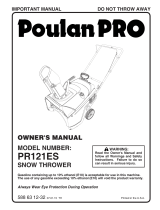 Poulan Pro PR121ES Le manuel du propriétaire
Poulan Pro PR121ES Le manuel du propriétaire
-
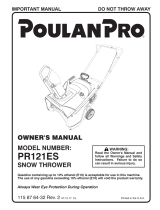 Poulan Pro PR121ES Le manuel du propriétaire
Poulan Pro PR121ES Le manuel du propriétaire
-
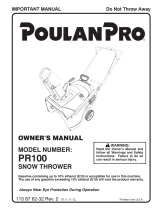 Poulan Pro PR100 Le manuel du propriétaire
Poulan Pro PR100 Le manuel du propriétaire
-
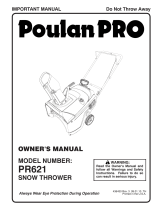 Poulan Pro PR621 Mode d'emploi
Poulan Pro PR621 Mode d'emploi
-
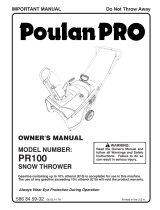 Poulan Pro PR100 Le manuel du propriétaire
Poulan Pro PR100 Le manuel du propriétaire
-
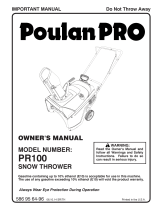 Poulan Pro PR100 Le manuel du propriétaire
Poulan Pro PR100 Le manuel du propriétaire
-
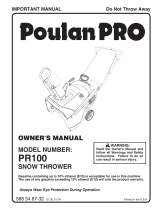 Poulan Pro PR100 Le manuel du propriétaire
Poulan Pro PR100 Le manuel du propriétaire
-
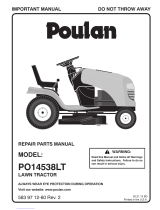 Poulan Pro PO14538LT Repair Parts Manual
Poulan Pro PO14538LT Repair Parts Manual































































